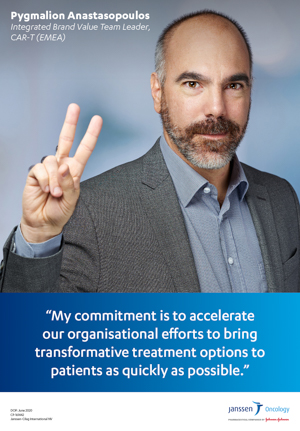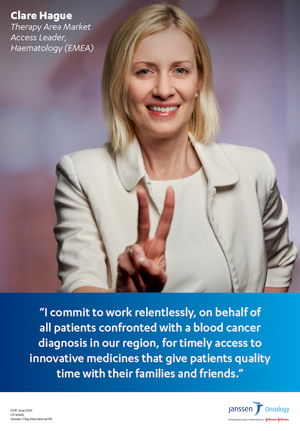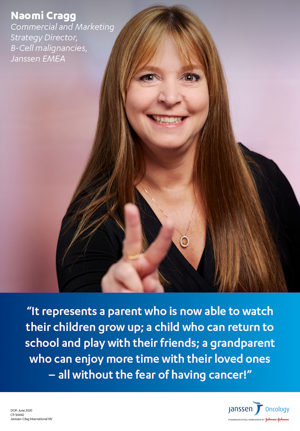Victories over Cancer

Enabling those affected by cancer to enjoy more of life’s meaningful moments: these are the Victories over Cancer that make our work worthwhile.
Despite the incredible work of the oncology community across Europe, cancer remains the second leading cause of premature death in the region.[i] [ii] At Janssen, we are working to change what a cancer diagnosis means, so that one day the words “you have cancer” will be less terrifying for people to hear and less distressing for physicians to say.
We are aiming to make cancer a manageable, even curable, condition, and dedicating ourselves to developing transformational and precise treatment solutions that improve lives and enable those affected by cancer to enjoy more of life’s meaningful moments.
For us, these everyday, individual Victories Over Cancer are what make our work so worthwhile.
Meet some of our team below and see what Victories Over Cancer mean to them, in their own words:








Now it’s your turn! We want to hear what Victories Over Cancer mean to you – share your thoughts alongside a picture of yourself striking the ‘Victories’ pose on Twitter or Instagram, and join in the conversation around how together we can help patients achieve even more Victories Over Cancer
i World Health Organization Regional Office for Europe. Cancer data and statistics. Available at http://www.euro.who.int/en/health-topics/noncommunicable-diseases/cancer/data-and-statistics. Last accessed May 2020.
ii Ferlay J, Colombet M, Soerjomataram I, et al. Cancer incidence and mortality patterns in Europe: Estimates for 40 countries and 25 major cancers in 2018. Eur J Cancer. 2018;103:356-387.


